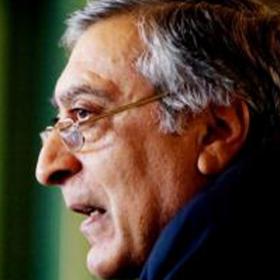
India-Japan Relationship Enters New Phase
EWI Board Member Amb. Kanwal Sibal discusses Prime Minister Shinzo Abe's visit to India from December 11 to 13 and the potential for closer Japanese-Indian relations in this piece for BusinessWorld.
Prime Minister Shinzo Abe's visit to India from December 11 to 13 has reinforced the India-Japan relationship in its economic and strategic dimensions. The most important strategic outcome of Abe's visit was the nuclear agreement signed by Prime Minister Modi and Abe. It will be formalised after the completion of some legal and technical procedures on the Japanese side, which will be timed according to Japan's parliamentary agenda.
The Joint Strategic Vision for Asia-Pacific and Indian Ocean regions signed with the US when Obama was chief guest at our R-Day celebrations in 2015 visualises Japan as a partner. During Abe's visit we have underscored more robustly than ever that peace, stability and development in the Indo-Pacific region are indispensable to our national security and prosperity, and that close cooperation between Japan and India is the key to achieving peace and stability in the region. With China's challenge in the East and South China Seas in mind, Modi and Abe have underscored the importance of international law including the United Nations Convention on the Law of the Sea (UNCLOS) and peaceful resolution of disputes without use or threat of use of force; freedom of navigation and overflight and unimpeded lawful commerce in international waters. Noting the critical importance of the sea lanes of communications in the South China Sea for regional energy security and trade and commerce, the two Prime Ministers have called upon all States to avoid unilateral actions that could lead to tensions in the region, which is a message to China.
Increased strategic understandings between India and Japan must have a stronger defence ties as a component. While no decision was announced on the US-2 amphibian aircraft, we have signed two defence related agreements during Abe's visit, one on Transfer of Defence Equipment and Technology and the other on Security Measures for the Protection of Classified Military Information. These foundational agreements open doors for a defence partnership. Even if actual defence co-development and co-production is not for tomorrow, the fact that these agreements have been signed shows how far Japan has travelled in its defence outlook, especially with India.
Other steps taken on the defence front with Japan is a decision on Japan's regular participation in the India-US Malabar exercises in order to "help create stronger capabilities to deal with maritime challenges in the Indo-Pacific region". The joint statement mentions the full utilisation of '2+2 Dialogue'( the Foreign and Defence Ministries together on both sides), Defence Policy Dialogue, Military-to-Military Talks, Coast Guard to Coast Guard cooperation and Air-Force to Air Force talks.
Complementing the decisions on defence, a trilateral Japan-India-US dialogue at Foreign Ministers level in September this year and the inaugural Japan-India-Australia dialogue at secretary-evel too took place. This presages a reconstitution of the Quad arrangements comprising of US, Japan, Australia and India at some point in the future. Both these are being projected as part of a stable security architecture in the Indo-Pacific region. Australia, significantly, is eager to join the Malabar exercises.
The joint statement mentions potential in areas of infrastructure, manufacturing and high technology, including advanced transportation systems, civil nuclear energy, solar power generation, space, biotechnology, rare earths and advanced materials. Both sides are seeking a synergy between India's "Act East" policy and Japan's "Partnership for Quality Infrastructure", that could help develop connectivity within India and between India and other countries in the region. The Memorandum of Cooperation on the hi-speed rail system (the Shinkansen system) on the Mumbai-Ahmedabad route and the highly concessional yen loan Japan has offered is path-breaking. The ODA figure for FY 2015 would be 400 billion yen, the highest ever accorded to India.
A $12 billion facility to support Japanese companies investing in India has been announced. India should become the plus one in Japan's China plus one economic strategy. In our briefings we have mentioned that the two sides are looking at 13 big infrastructure projects, including the Western Dedicated Freight Corridor, the Ahmedabad Metro Project, the modernization of ship recycling yards in Gujarat, the Mumbai trans-harbour link, the peripheral ring road around Bengaluru, the Chennai Metro project, the Tuticorin outer harbour project, Ganga rejuvenation, and road connectivity projects in the North-East. These projects will implement the commitment made by Abe during his visit last year to invest US $ 35 billion over the next five years in India. Abe has appreciated creation of a "Core Group" chaired by Cabinet Secretary to ensure that investments from Japan as envisaged in India-Japan Investment Promotion Partnership are facilitated. At the multilateral level, Japan has expressed support for our membership of APEC.
There is an understanding that 10,000 Indians would be visiting Japan as students and as trainees in various capacities in the next five years. There are some question marks about how this system of internship is actually being implemented in Japan and therefore should be looked into so that the programme meets our needs. India has decided that Japanese visitors in all categories could avail of a visa on arrival from March, 2016, the first country to be offered this arrangement. Japan needs to reciprocate by making visa delivery easier for Indian visa-seekers, which is not the case so far.
The India-Japan relationship has begun to discover its full potential.
To read this piece on BusinessWorld, click here.

